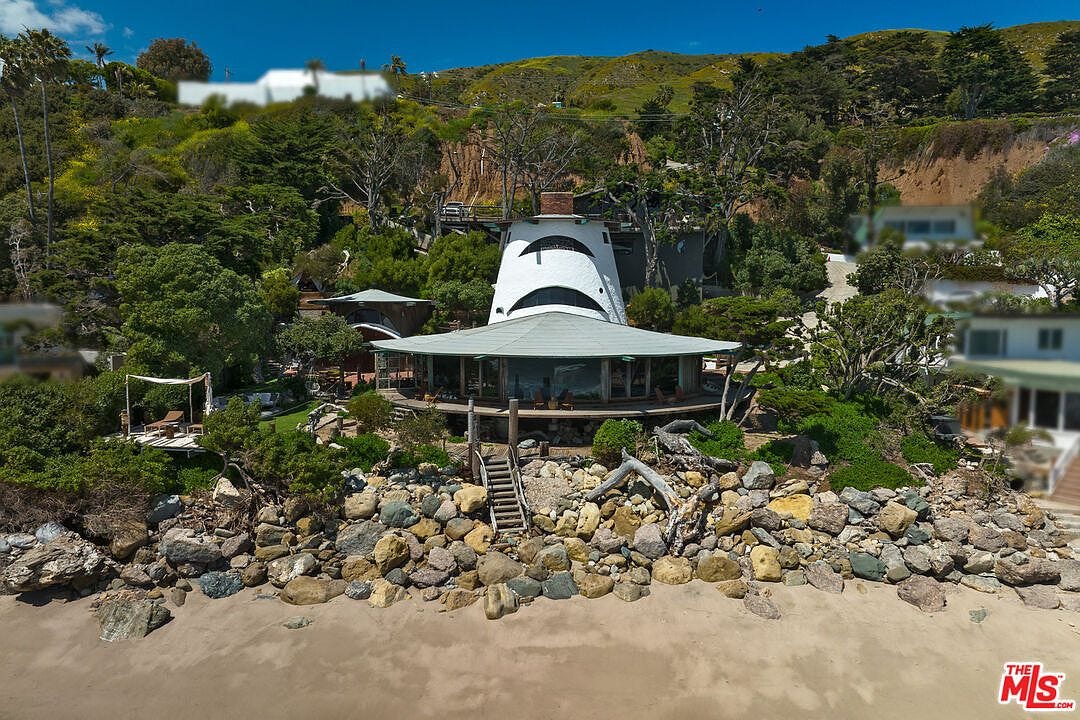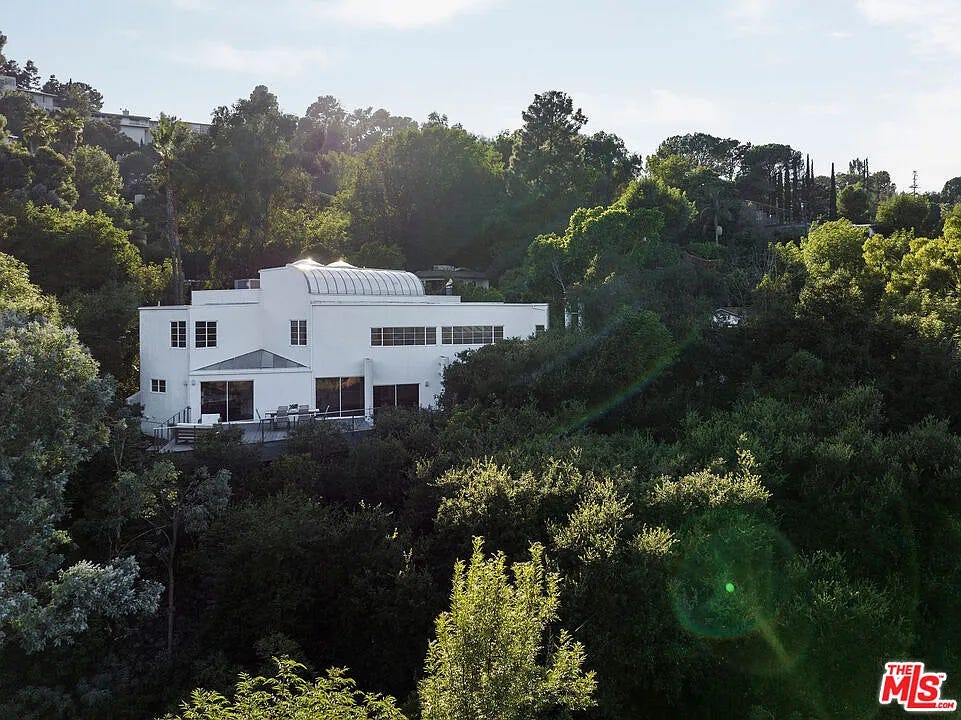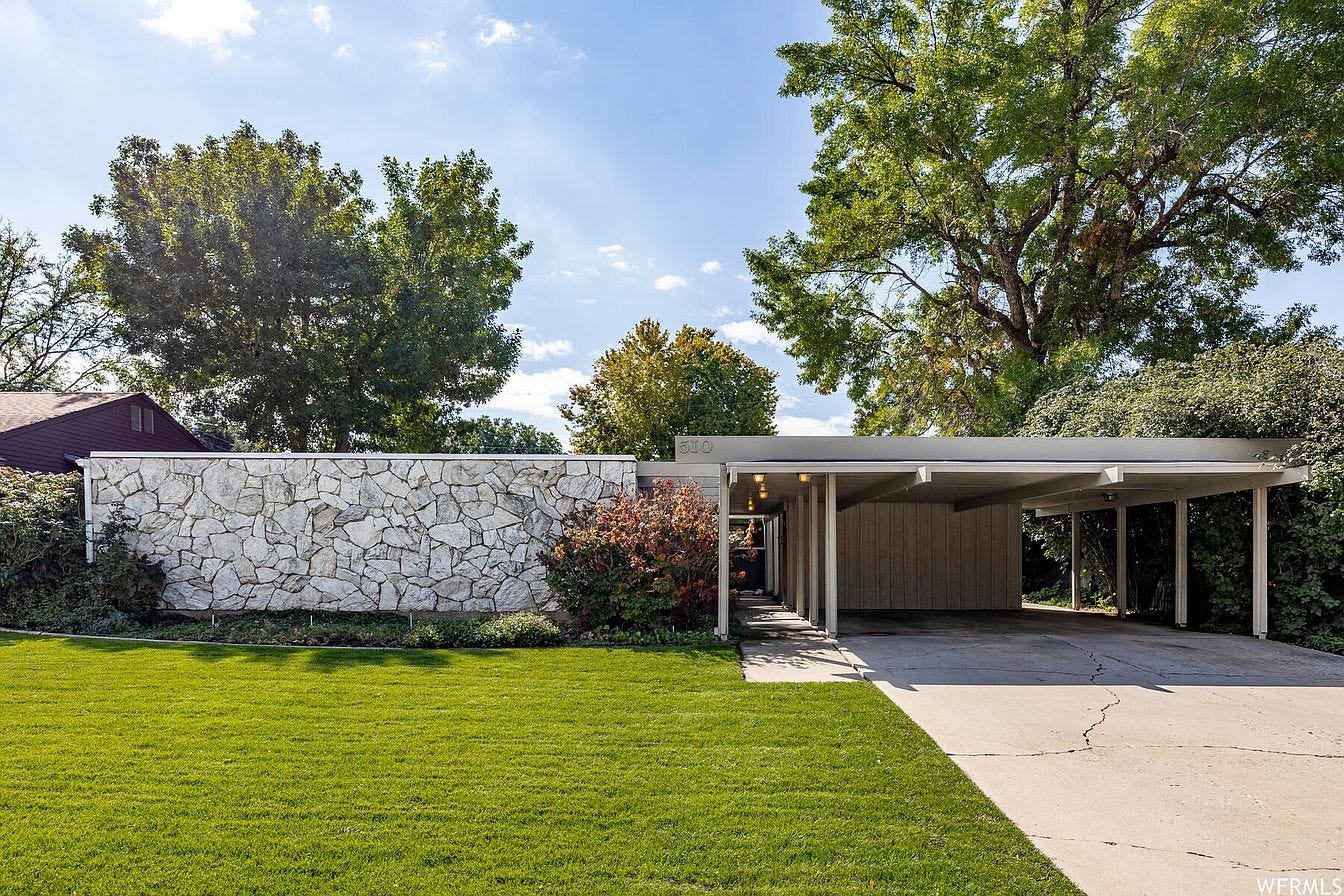Designing Everything with Raymond Loewy
Plus, 20 Mid-Century Modern Home Listings 📍
Consumerism shaped postwar America. From Coca Cola to Campbell’s, McDonalds to Marlboro, bright and bold designs helped sell the American dream. Prosperity and happiness were just a purchase away at your local supermarket chain or car dealership. The emergence of consumer credit, television ads, and fast food, all fueled by the craftiness of Madison Avenue, ushered in a new era of commerce. Ironically, the man most responsible for America’s postwar consumer image wasn’t born in Chicago or Boston, but Paris.
Long before Raymond Loewy ever imagined a logo, he dreamt of machines. Loewy spent his early years fascinated by planes and trains, winning a design competition with a model aircraft he created in 1910. He studied engineering at the University of Paris before serving in the French Army in World War I.
After the WWI, Loewy moved to New York City. Serendipitously, he found work designing window installations for department stores across the city, including Macy’s and Saks. Happy clients led to referrals and different types of commissions. These early projects highlight the amazing range of Loewy’s talent. Over the following decade, he produced layouts and fashion illustrations for Vogue and Harper’s Bazaar, designed trains for the Pennsylvania Railroad, created packaging for Lucky Stripe Cigarettes, designed the interior of the Boeing 307, and a created a new logo for Studebaker Automotive.
The breakout of WWII briefly slowed the designer’s roll as foreigners were temporarily prohibited from working in some American industries, including automotive. In 1946 though, things quickly took off again as Loewy was elected President of the American Society of Industrial Designers. His design consultancy, Raymond Loewy Associates, expanded to Paris, Fribourg, and London and in 1949, he appeared on the cover of Time magazine.
Loewy’s post-war portfolio was particularly prolific, with more successful projects than can be named here. In the 1950’s through 70’s, the designer’s work included the following:
Greyhound Bus GX-1 and Scenicruiser (1951)
Peach Cigarette Packaging (1952)
Studebaker Commander (1953)
Coca-Cola Bottle Redesign (1955)
Sunbeam Mixmaster (1956)
Le Creuset Coquelle (1958)
TWA Logo (1959)
Coca-Cola Steel Can Design (1960)
Air Force One Livery (1962)
Studebaker Avanti (1963)
Exxon Logo (1966)
NASA - Various Space Station Designs (1967 - 1973)
United States Postal Service Eagle Logo (1970)
Shell Logo (1971)
Described during that era as “perhaps the World’s most renowned designer,” Loewy lived the luxurious lifestyle you might expect. He was a self-professed gourmet who possessed a refined taste for food, wine, fashion, and travel. During the middle of his career, Loewy was known to spend 6 months at a time traveling through Italy, France, Germany, and England before returning to catch up on his work in New York. With the help of Swiss modernist architect, Albert Frey, Loewy built a stunning desert get away in Palm Springs, next door to none other than Richard Neutra’s Kauffman house. The designer spent his final years in his native France and Monaco.
GEMS FOR SALE THIS WEEK
1963 N Mandeville Canyon Rd, Los Angeles, CA 90049
4500 Don Timoteo Dr, Los Angeles, CA 90008
33604 Pacific Coast Hwy, Malibu, CA 90265
9000 W 3rd St #PENTHOUSE, Los Angeles, CA 90048
7317 Pyramid Dr, Los Angeles, CA 90046
855 Timber Ln, Boulder, CO 80304
275 S Grape Street, Denver, CO 80246
510 E Center St, Springville, UT 84663
2831 E 2100 S, Salt Lake City, UT 84109
2196 E Mabey Dr, Salt Lake City, UT 84109
1874 S Wasatch Dr, Salt Lake City, UT 84108
848 Creighton St, Cheyenne, WY 82009
1101 Hilltop Dr, Lawrence, KS 66044
420 College Blvd, Statesboro, GA 30458
2112 Lawnmont Ave, Austin, TX 78756
1403 Dwyce Dr, Austin, TX 78757
561 Lake Dr, Harlingen, TX 78550


























I love that USPS logo